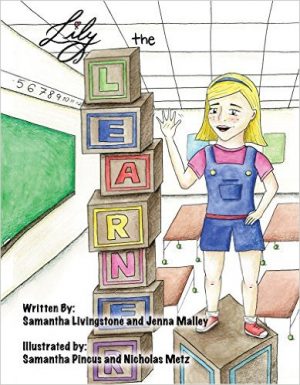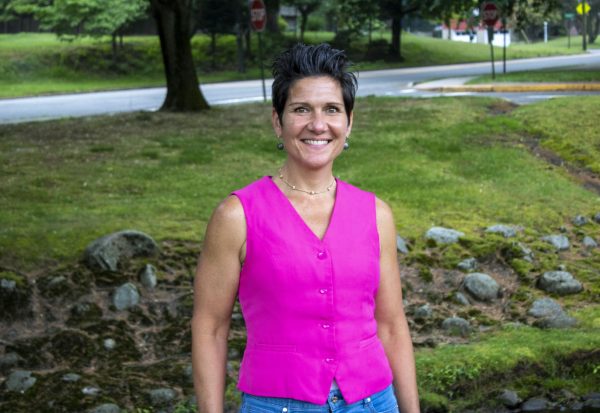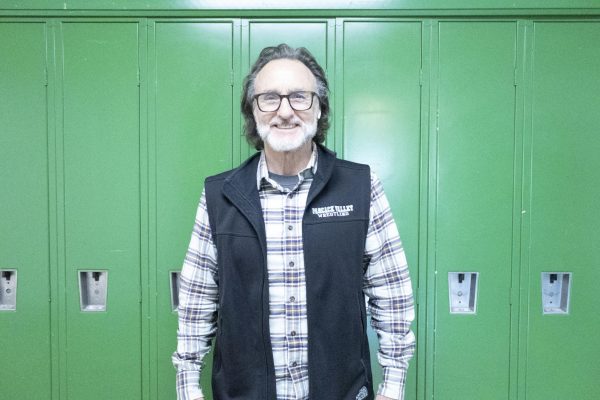Pascack Pi-oneer members create useful website
The program, Ready, Set, Speak!, was created to help children with autism
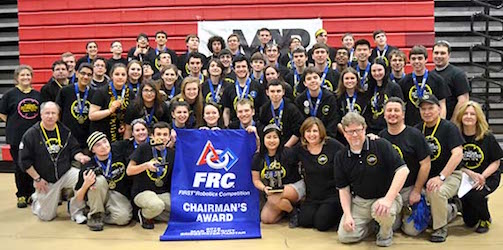
The Pascack Pi-oneers pose with the Chairman’s Award. PV juniors Hailey Kraft and Sara Takubo are a part of the robotics team and brought their website to the Pi-oneers.
“Car,” PV sophomore Hannah Epstein repeats to herself.
Once the program recognizes that she is saying the word correctly, she begins to move on to the next word. Epstein makes sure she is enunciating and speaking slowly and loudly for the camera until she says it perfectly.
Epstein is a member of the Pascack Pi-oneers who recently worked with members Sara Takubo and Hailey Kraft to create Ready, Set, Speak!
Ready, Set, Speak! is a website to help children with autism comprehend and communicate language in spelling and pronunciation. It applies two principles: applied behavioral analysis (ABA) and verbal imitation. PV junior Kraft is the founder of the website and PV junior Takubo is the executive manager.
Ready, Set, Speak! was originally an FFL project. The Holdrum Middle School robotics team is an FFL team.
“For the program, we focused on Hailey’s personal connection with her brother, Avery, who has autism,” Takubo said. “He was the inspiration for the project.”
The idea was never made into a website until Takubo and Kraft joined the Pascack Pi-oneers in high school.
For the website, Kraft talked with behaviorists and psychologists to make Ready, Set, Speak! the best it could be.
“I talked to my brother’s speech pathologist, his behaviorist, and his supervisor of his classroom all at separate times,” Kraft said. “They all have known me since I was 9 and they all were very familiar with me and really willing to help. They thought the website was a great idea and gave me some really beneficial feedback.”
Ready, Set, Speak! was officially launched this year. It is continually being expanded. The design of the site is simple and minimalistic because children with autism occasionally have trouble focusing. It was specifically made for this reason.
To use the website, Takubo says to go to the instructions tab for how to work the website.
There are nine categories with 55 words in total of the most relevant words a student would use, according to Takubo. The videos consist of beginner, intermediate, and advanced. The intermediate and advanced levels were made to help develop comprehension.
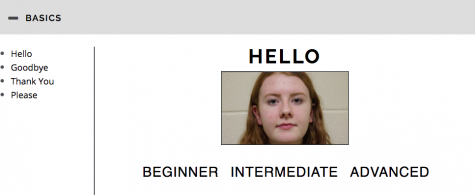
One of the categories is called basics and has multiple words with corresponding videos in beginner, intermediate, and advanced.
“Verbal imitation is used with the categories,” Takubo said. “It is a principle where a therapist would use a mirror to have her student repeat the mouth movements of the word she said. In the camera function, you can film yourself imitating the mouth motions.”
Pascack Pi-oneers were asked to help with making these videos for each category. There are 171 videos in total.
“Each Pi-oneer who was filmed had to be someone who could clearly enunciate words in a way that could be easily understood by children with autism and apraxia,” Epstein said. “To record these videos, each Pi-oneer who contributed to the project was given a topic, such as ‘Transportation’ or ‘Breakfast,’ where they were given a series of words or phrases that needed to be clearly enunciated.”
Once Takubo and Kraft graduate, they will leave the responsibility of expanding the website to future Pi-oneers.
Takubo and Kraft hope that schools with implement this in their curricula and use the website as a tool.
“I hope the website will make families’ lives easier,” Kraft said. “If their children are able to communicate, their behaviors and aggressions will decline and they will be able to hold conversations and understand more.”



